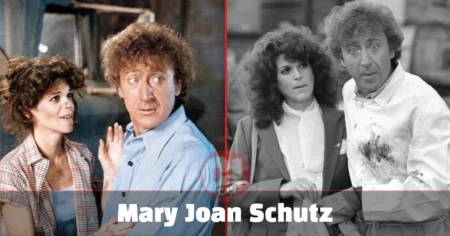The story of Dylon Ray Peterson serves as a stark reminder of how quickly lives can be shattered by senseless violence. In January 2007, this 25-year-old culinary student committed a brutal double homicide that shocked the Vancouver, Washington community and left many grappling with unanswered questions.
Who is Dylon Ray Peterson?
Dylon Ray Peterson was a young man with dreams of becoming a chef. At the time of the murders, he was enrolled in the Le Cordon Bleu Program at Western Culinary Institute in Portland, Oregon. Before January 7, 2007, Peterson had no criminal record, making his sudden violent actions all the more baffling and disturbing.
Peterson’s background prior to the murders is not extensively documented. He grew up in the Pacific Northwest, and by all accounts, seemed to have a fairly normal upbringing. However, as later revealed in court records, Peterson had a history of clinical depression and had attempted suicide six times before the murders.
Early Life and Education
While details about Peterson’s early life are scarce, we know that he was pursuing a career in the culinary arts. His enrollment at the Western Culinary Institute suggests a passion for cooking and a desire to turn that passion into a profession. This path should have led to a bright future, not a prison cell.
Peterson’s decision to pursue culinary education speaks to his ambitions and interests. The Le Cordon Bleu program is known for its rigorous training and high standards, indicating that Peterson had both talent and drive in his chosen field. It’s a tragic irony that someone training to nourish others would end up taking lives instead.
The Incident: January 7, 2007
On that fateful Sunday morning, Peterson’s life took a dark and irreversible turn. He was staying at a K Street apartment in Vancouver, Washington, with the family of a classmate[1]. In the early hours of January 7, Peterson committed an unthinkable act of violence that would forever change multiple lives.
The victims were 45-year-old Sandra J. Torell and her 15-year-old son, Mathew Nagle. Sandra was stabbed, while Mathew’s throat was slashed. The brutality of the attack was shocking, especially coming from someone with no history of violence.
What makes this case particularly chilling is Peterson’s actions immediately following the murders. At 6:49 a.m., he called 911 and confessed to the crimes. During the call, Peterson reportedly told the dispatcher, “I made sure they were dead before I called”. This cold and calculated statement adds an extra layer of horror to an already tragic situation.
Timeline of Events
To better understand the sequence of events in this case, let’s look at a detailed timeline:
| Date | Event |
|---|---|
| Early 2000s | Peterson enrolls at Western Culinary Institute |
| January 7, 2007, early morning | Peterson commits the murders |
| January 7, 2007, 6:49 a.m. | Peterson calls 911 to confess |
| January 7, 2007, shortly after | Peterson is arrested outside the apartment complex |
| April 30, 2007 | Peterson pleads guilty to two counts of first-degree murder |
| May 22, 2007 | Peterson is sentenced to 57 years and 4 months in prison |
Legal Proceedings
After committing the murders, Peterson’s actions were as shocking as they were unexpected. His immediate confession via 911 call is unusual in such cases and raised many questions about his mental state at the time of the crimes.
When police arrived at the scene, they found Peterson outside the apartment complex in bloodied clothes. He was promptly arrested and charged with two counts of first-degree murder.
In April 2007, just a few months after the killings, Peterson pleaded guilty to both charges. This plea deal allowed him to avoid aggravated murder charges, which could have led to the death penalty[8]. The decision to plead guilty may have been influenced by the overwhelming evidence against him, including his own confession.
On May 22, 2007, Peterson was sentenced to 57 years and 4 months in prison. This lengthy sentence essentially amounts to life behind bars, as Peterson will be in his 80s before he’s eligible for release, assuming he serves his full sentence.
Mental Health Concerns
As the case unfolded, troubling details about Peterson’s mental health came to light. It was revealed that he had a history of clinical depression and had attempted suicide six times before the murders[3]. This information raises important questions about the intersection of mental health and violent crime.
Following his arrest, Peterson underwent a mental evaluation at Western State Hospital[3]. While the results of this evaluation weren’t made public, the fact that it was deemed necessary speaks volumes about concerns regarding his mental state.
Peterson’s history of depression and suicide attempts suggests a long-standing struggle with mental health issues. It’s worth noting that mental illness alone does not predispose someone to violence, and the vast majority of people with depression do not commit violent crimes. However, in this case, it appears that Peterson’s mental health issues may have played a role in his actions.
The revelation of Peterson’s mental health history also raises questions about access to mental health care and the effectiveness of interventions. Could earlier or more intensive treatment have prevented this tragedy? How can we better identify and help individuals struggling with severe mental health issues before they reach a breaking point?
Impact on the Community
The murders committed by Dylon Ray Peterson left an indelible mark on the Vancouver community, particularly on the friends and family of the victims. The sudden and violent loss of Sandra Torell and Mathew Nagle sent shockwaves through their social circles and the wider community.
During Peterson’s sentencing, family members of the victims expressed their grief and the void left by the loss of their loved ones[8]. Eric Nagle, Mathew’s father, spoke to the media after the sentencing, likely sharing the pain and anguish felt by the family[19].
The case served as a grim reminder of the unpredictable nature of violence and the devastating impact it can have on a community. Vancouver, like many communities, had to grapple with the reality that such a horrific crime could happen in their midst.
Aftermath and Reflections
Peterson’s imprisonment serves as a stark reminder of the consequences of his actions. His case emphasizes the importance of being vigilant in recognizing and addressing mental health issues. It also highlights the need to balance punishment with rehabilitation in the criminal justice system.
The story of Dylon Ray Peterson is a tragedy on multiple levels. Two innocent lives were lost, families were shattered, and a young man with potential ended up spending most of his life behind bars. It’s a somber reminder of the devastating consequences that can result from untreated mental health issues and sudden, inexplicable violence.
As we reflect on this case, it’s crucial to consider how we as a society can work to prevent such tragedies in the future. This means not only improving our mental health support systems but also fostering communities where people feel comfortable seeking help before reaching a crisis point.
Conclusion
The case of Dylon Ray Peterson serves as a tragic reminder of the devastating consequences of unchecked mental health issues and the importance of early intervention. While justice was served in the legal sense, the loss of two innocent lives and the far-reaching impact on the community remain a somber legacy of this case.
As we look back on this tragedy, it’s crucial to consider how we as a society can better address mental health concerns and prevent such incidents in the future. The story of Dylon Ray Peterson is not just a tale of crime and punishment, but a call to action for improved mental health awareness and support systems.
This case continues to resonate with many, serving as a stark reminder of the fragility of life and the importance of mental health care. It underscores the need for vigilance, compassion, and proactive measures to prevent such tragedies from occurring in the future.
For more in-depth analyses of complex social issues and their impact on communities, visit https://canmagazine.co.uk/







